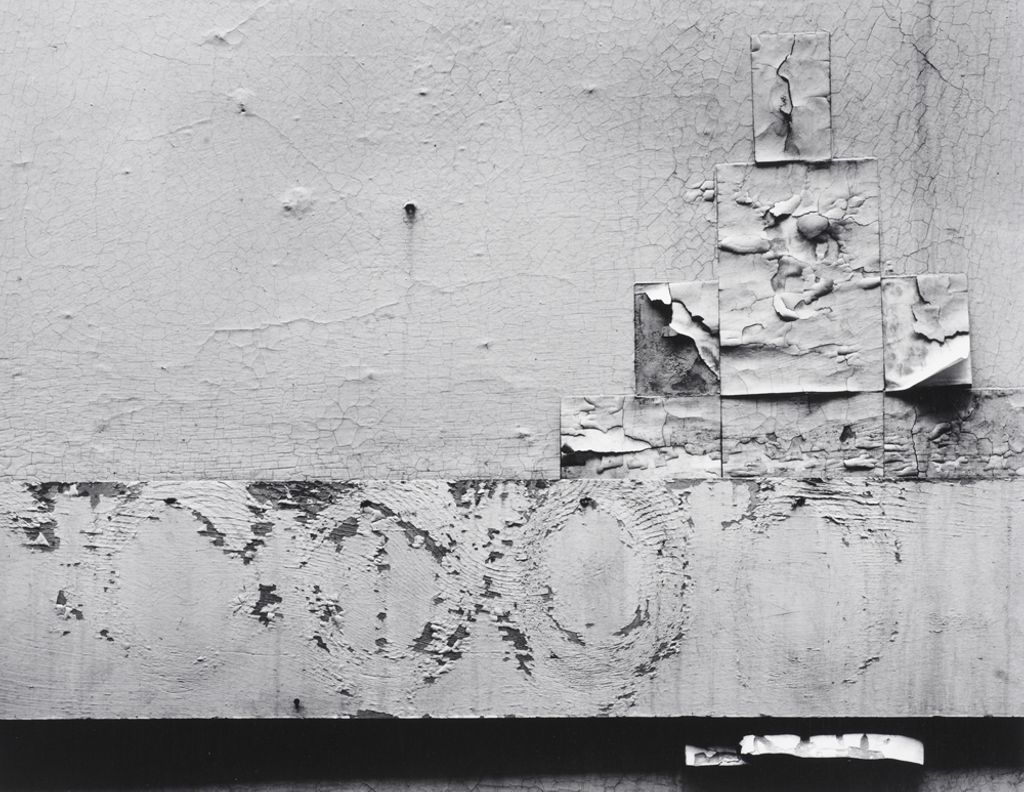Title: Chicago 27
Year: 1960
Location: Unknown
Description:
In Aaron Siskind’s “Chicago 27” from 1960 we see a composition of what seems to be a cracking painted surface. While the background of the piece looks to be white paint on a slab of wall that is partially cracking, on the lower and right hand side there are what seem to be clearly defined rectangular patches of the same color stacked up hierarchically, almost intentionally. To the viewer, first impressions could be that the patches are there to perhaps prevent water leak – an inference made from the suggestion that water has been running out of the wall from a small black hole close to the center which has a vertical streak running down from it. The patches are more badly weathered than the wall itself, also pointing to potential water damage. At about the lower ¼ of the image, the material seems to be different than the rest and although it retains similar color paint, four rings are visible across this lower band. This could possibly be an indication that something had been leaning against this area, but it definitely exposes a wood type of material by the way it’s cracking.
The overall composition of the image also could shed light on the reason it is called Chicago 27. The patches which seem too organized to have just been placed there at random look as if they build up to represent a skyscraper with a wide body flanked with other towers and a narrow piece on top, potentially suggesting a spire. The cracking od the background or the hole in the center may be representative of the sky with lightning bolts or stars present. The lower band with the four rings and wood material might be representative of the lumber industry in Chicago of the 20th century. All minute details add up to create a very diverse, yet very related composition.


Good overall description of the elements in the wall. You can also describe the two projections that interrupt the black shadow on the bottom and how they contribute to the composition.